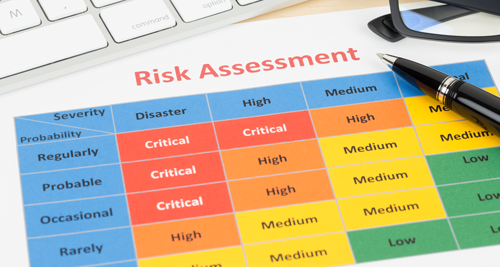Codes of Practice: the "how" of work health and safety compliance
Codes of practice provide practical guidance on how to comply with the work/occupational health and safety (WHS/OHS) legal requirements for hazard types. This includes a step-by-step guide through the risk management process.
This article highlights the structure of a typical code of practice, how codes of practice differ from other guidance documents and the codes of practices in force across each jurisdiction.
The information presented in this article only applies to WHS and OHS legislation. Further codes of practice may be mandatory under specific safety legislation, such as dangerous goods, electricity, heavy vehicles, poisons and public health legislation.
The different types of codes of practice
Safe Work Australia has published several model codes of practice covering common hazard types such as confined spaces, hazardous manual tasks and managing risks of plant in the workplace. Most jurisdictions in Australia refer to these model codes of practice in their WHS/OHS legislation, in their current form or modified to suit their state or territory’s working environment. Some jurisdictions also include other approved or preserved codes of practice from safety authorities or regulators in their legislation.

The structure of a code of practice
The commonality between the different types of codes of practice is the information they cover. Below is the structure of a typical code of practice and examples of the content using the model code of practice for confined space.
| Structure | Example of content* |
| An introduction to the safety aspect |
|
| Who the duty holders are and what their responsibilities are in managing the risks |
|
| How to identify the hazards |
|
| What the hazards are | For confined spaces these could be:
|
| Assessing the risks arising from the hazards | A risk assessment must consider matters such as:
|
| Controlling the risks | Hierarchy of control is used:
|
| Maintaining and reviewing control measures | Common review methods include:
|
*Information provided is only for demonstration purposes. Refer to the model code of practice for confined spaces for appropriate compliance guidance.

The role of codes of practice
Though most codes of practice are not mandatory, their content plays a valuable role for duty holders, inspectors, and court officials in achieving, demonstrating and enforcing compliance.
Codes of practice:
- assist duty holders to achieve work health and safety compliance
- assist in the development of documentation such as safe operating procedures (SOP), work instructions, safe work method statements (SWMS), emergency procedures and training guides
- are referred to by inspectors when issuing improvement notices, provisional improvement notices and prohibition notices
- are admissible in court and used as evidence for knowing applicable hazards, risks and controls
- are used by the courts as reference to what is deemed ‘reasonably practicable’ in certain circumstances
Codes of practice versus other types of guidance material
Safe Work Australia’s Codes of Practice and Guidance Material Information Sheet highlights the key differences between a code of practice and other types of guidance material. These are:
| Codes of practice | Other types of guidance material |
| Provide authoritative advice | May offer a wider variety of options for the duty holders to choose from. |
| Approved codes of practice are automatically admissible in court. Evidentiary status under a jurisdiction’s WHS/OHS law is only given to a code of practice once they have been approved by the Minister responsible for the WHS/OHS legislation. | Contribute to overall risk management knowledge but need to be tendered to use as court evidence. |
| During the development stage of a code of practice, they may need to be assessed for their regulatory impact on business or not-for-profit organisations. | Safe Work Australia members decide if a document is required as a code of practice or guide. Guidance material does not require regulatory impact assessment. |

Codes of practice used by jurisdiction
| Jurisdictions | Codes of practice |
| Australian Capital Territory | Australian Capital Territory has 27 approved codes of practice under the Work Health and Safety Act 2011. |
| Commonwealth | The Commonwealth has 24 codes of practice approved under the Work Health and Safety Act 2011. |
| New South Wales | New South Wales has 46 codes of practice in force under the Work Health and Safety Act 2011. Of these codes of practice, 20 were developed based on previous work health and safety laws but sill meet current WHS legal requirements. |
| Northern Territory | The Northern Territory has approved codes of practice in the Work Health and Safety (National Uniform Legislation) Act 2011 are based on the model codes of practice. |
| Queensland | Queensland has 42 approved codes of practices that a PCBU has a legal requirement to comply with under the Work Health and Safety Act 2011. However, the legislation does allow for other methods of managing hazards and risks on the condition that those methods provide a standard of health and safety that is equivalent to, or higher than, those required under the code. Queensland is the only jurisdiction in Australia where compliance with WHS codes of practice is a legal duty for a PCBU. |
| South Australia | South Australia has 26 approved codes of practice and one code of practice for tuna farm diving (in review). Most of South Australia’s codes of practice under the Work Health and Safety Act 2012 are based on the model codes of practice. |
| Tasmania | Under Tasmania’s work health and safety legislation there are 29 approved codes of practice, predominantly the model codes of practice. Four codes have been preserved from the now-repealed Workplace Health and Safety Act 1995 and approved under the current work health and safety laws. |
| Victoria | Victoria’s Occupational Health and Safety Act 2004 has 17 compliance codes to use as practical guides for those who have a duty or obligation under the Act or regulations. |
| Western Australia | At the time this article was published, Western Australia’s new Work Health and Safety Act 2020 was not in force, therefore the approved codes of practice are the 39 under the Occupational Safety and Health Act 1984.
Although the Western Australia government has stated it will use the model codes of practice when the new WHS Act comes into operation, the Act’s transitional provisions allow the codes of practice that are in effect under the OSH Act to continue as if they were approved under the new Act. |

Legal effect of codes of practice for each jurisdiction
For all jurisdictions except Queensland, approved codes of practice are admissible in court proceedings as evidence of whether a duty or obligation under the Act has been complied with.
Methods or evidence differing from the codes of practice can be introduced provided the standard of work health and safety is equivalent or higher than the standard in the required code.
References
- Australian Capital Territory Work Health and Safety Act 2011
- Australian Government Work Health and Safety Act 2011
- New Zealand Health and Safety at Work Act 2015
- Northern Territory Work Health and Safety (National Uniform Legislation) Act
- Queensland Government Work Health and Safety Act 2011
- Safe Work Australia Legislation
- South Australia Work Health and Safety Act 2012
- Tasmania Work Health and Safety Act 2012
- Western Australia Occupational Safety and Health Act 1984